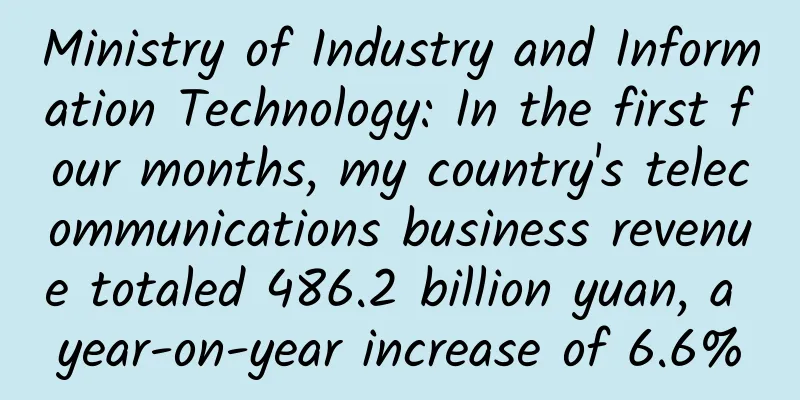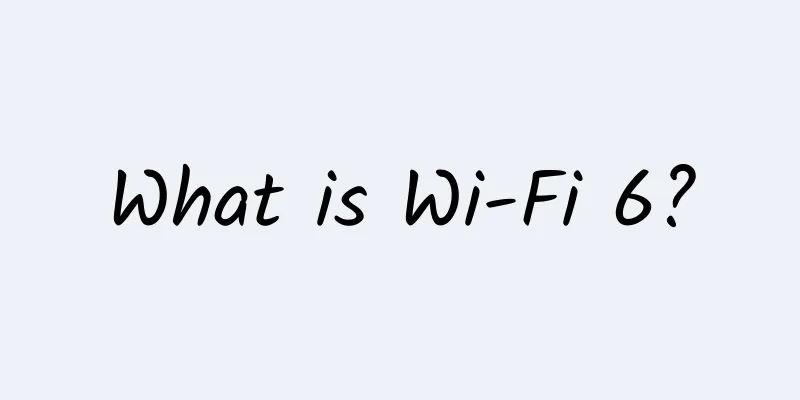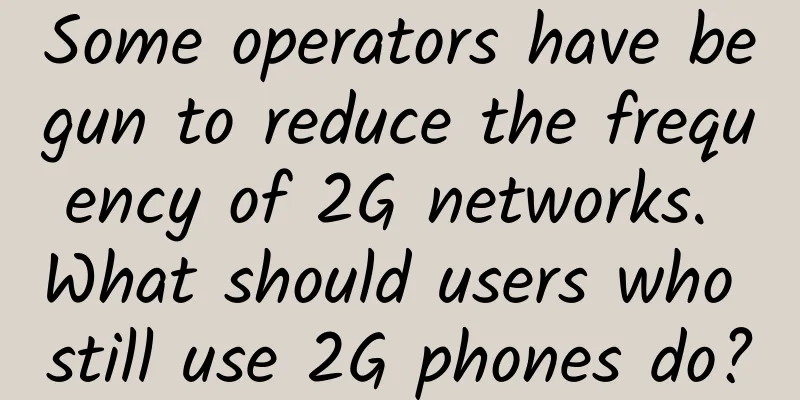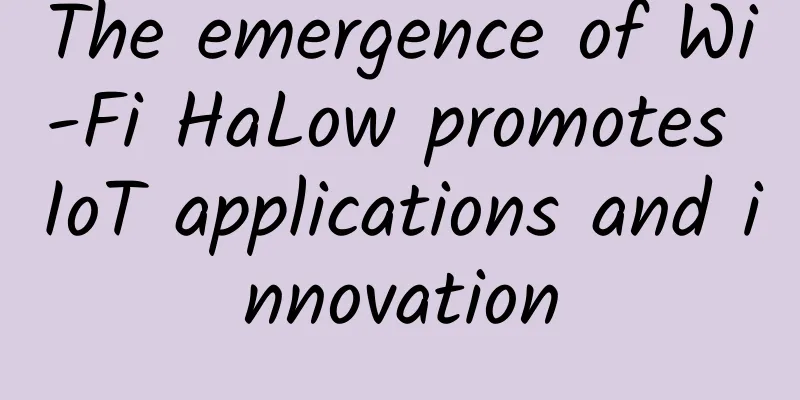5G makes the Internet of Everything possible. Planning the Internet of Things in the era of big connections

|
The development of technologies such as 5G, cloud computing and artificial intelligence will further activate the implementation of IoT applications. As the next generation of communication technology, 5G has not only received strong support from many countries, but also companies such as communications, chips and operators are actively planning the 5G commercial process, thus making the interconnection of all things in the IoT era possible. At the same time, operators also hope that 5G can break free from the fate of pipelines and are full of expectations for 5G. 5G drives the Internet of Everything The development of technologies such as 5G, cloud computing, and artificial intelligence will further activate the large-scale application of the Internet of Things. Since the Internet of Things is regarded as another trillion-level market, the number of global Internet of Things devices will also achieve a leap in the next few years. The number of connected devices will reach tens of billions by 2020, including wearable devices, home appliances, clothes, shoes and hats, and even a city, etc., all connected to the "cloud".
As long as you want, you can design a "smart home" based on the Internet of Things to realize smart home life. Connecting all devices will reshape every aspect of our daily lives. Among the massive connections, 5G is the main driving force. To realize the Internet of Things, 5G will play a vital role. At the same time, as part of a country's competitiveness, 5G has received strong support from many countries including China and the United States. Developed countries such as the United States, China, Japan, Germany, South Korea and the United Kingdom are at the forefront of 5G development. Due to its huge economic potential, many countries have also stated that they will launch commercial services in 2020. According to IHS Markit estimates, by 2035, the potential sales activities created by 5G worldwide will reach 12.3 trillion US dollars. Planning the Internet of Things in the era of big connections There are three levels in the Internet of Things industry: connection, platform and application. In this era of big connection, the Internet of Things will create a market size of hundreds of billions for device communication companies and operators. Equipment manufacturers also hope to reshape the market in the era of the Internet of Things. Nokia in particular hopes to leverage the Internet of Things to restore its former glory. Communications giant Huawei has also been actively planning the Internet of Things. 1. Huawei Since Huawei proposed the IoT strategy, its development vision has changed from "the world's leading information and communication solutions provider" to "a better fully connected era". Huawei said that we are entering an exciting intelligent era. However, connection is the foundation of "Internet of Everything". As a company that wants to connect the world, Huawei is committed to building leading IoT connectivity capabilities. In order to develop 5G technology, Huawei has invested a lot of resources. The company has 80,000 R&D personnel and hopes to occupy the market high ground. (2) Nokia Nokia, which does not make money from selling mobile phones, had annual revenue of 23.945 billion euros (about 182.8 billion yuan) in 2016. After selling its mobile phones and other businesses, it began to focus on communications to develop the Internet of Things. The acquisition of Alcatel-Lucent is seen as Nokia's core strategy for transforming into the Internet of Things, which will help accelerate the development of future technologies such as 5G and the Internet of Things. At the same time, based on the connection of massive IoT devices, Nokia has built a huge Impact management platform, which currently connects and securely manages 1.5 billion devices. The era of big connections has brought Nokia a major transformation. While actively expanding the IoT ecosystem, Nokia hopes to leverage the IoT to reshape its past glory. (III) Operators Operators also hope that 5G can break free from the fate of being a pipeline. China Mobile has said that it will conduct large-scale pre-commercial 5G tests in 2019 to guide the 5G industry towards maturity and commercialization. In addition, as the largest operator in China, China Mobile is the first company to establish a professional IoT business. In 2016, the number of IoT connections exceeded 100 million. In the field of Internet of Things, we launched the open platform OneNET to promote Internet of Things solutions and form a comprehensive "cloud-pipe-end" architecture of Internet of Things to promote the large-scale application of Internet of Things in all walks of life. Based on the big connection strategy, we aim to achieve the goal of 5 billion connections by 2020. The Internet of Things is expected to bring China Mobile up to 100 billion yuan in revenue. Other operators around the world are also actively planning 5G deployment. US operator Verizon announced that it will conduct trial operations of 5G in multiple cities in the US this year. South Korean operator KT plans to complete the deployment of its 5G network by September 2017. Japan's NTT DoCoMo announced that it will launch a 5G trial network in Tokyo in 2017. Although the industry generally expects that 5G commercialization will take several years, operators seem to be impatient. (IV) Intel Intel Aicha Evans said: 5G is coming to us - it is in the network, in the cloud, and on the client. As mobility is no longer limited to smartphones, 5G is becoming one of the most influential technological changes we may see in our lifetime. It will bring a new generation of experience such as driverless cars, smart cities, and the Internet of Things, and will connect everything and everyone. To this end, Intel is actively building a 5G ecosystem, teaming up with communication operators such as China Mobile, China Telecom, and AT&T to conduct 5G trials and accelerate the road to 5G. In the view of Intel Fellow Wu Geng, 5G is not just the evolution of communication technology, but also a comprehensive revolution in the integration of communication technology and computing technology. However, in the 5G era, can Intel replicate its success in the PC era by betting on new technologies such as communications and the Internet of Things? Yang Jianyong said: "At a time when the PC growth dilemma is coming and after the pain of the mobile Internet transformation, I believe Intel will never allow itself to miss the Internet of Things era again. However, the most critical thing for Intel is whether it can bet on the right industry direction and keep pace with the market." Written to *** Equipment manufacturers and operators will dominate the development of 5G technology. Huawei, ZTE, Ericsson, Nokia, Intel, Qualcomm and other manufacturers will shoulder the "main responsibility" of 5G. The 5G era is coming, which will enable the interconnection of all things in the era of the Internet of Things. It can be said that 5G technology was born for the Internet of Things. Since the Internet of Things is all-encompassing and covers all fields, it involves deep interactions between people and things, things and things, and generates massive amounts of data in many sub-fields. Data is the oil of the new era. In order to meet the computing and connection needs of massive data, the arrival of 5G will fully release the potential of data. This is the core value of the Internet of Things and will create more business opportunities for society. The author of this article, Yang Jianyong, has long been paying attention to cutting-edge technology industries such as the Internet of Things, smart homes, wearable devices, robots, and artificial intelligence. |
<<: Think about these three details clearly, and your Internet of Things will be truly implemented!
>>: The story of spectrum: from analog signals to 3G and now to 5G networks
Recommend
The three major operators work together to embrace 5G positioning, accelerate capacity improvement, and jointly create an industrial ecosystem
Telecom operators are not only the builders and o...
Nanchang Wanda City Marketing Secret: Ruijie's "Five-Star" Wi-Fi Makes Every Guest a VIP
Free Wi-Fi is an indispensable service during tra...
Three ways to send large amounts of data over HTTP
In the early days of the web, people sent files t...
VMISS 20% off, Los Angeles CN2 GIA/AS9929/Hong Kong/Korea/Japan VPS monthly payment starts from 4 Canadian dollars
VMISS is a foreign hosting service provider regis...
How Huawei's edge computing bridges the physical and virtual worlds
[51CTO.com original article] If you ask what are ...
In the era of intelligent IP, Huawei injects new momentum into the industry and releases the white paper on smart charging pile IoT technology
[51CTO.com original article] On September 25, at ...
Ministry of Industry and Information Technology: my country has built nearly 850,000 5G base stations
According to the Ministry of Industry and Informa...
My girlfriend suddenly asked me what DNS is...
[[357457]] This article is reprinted from the WeC...
WiFi 7 is coming, but is it really reliable?
There is no fastest, only faster. WIFI6 has just ...
The Internet "began to die" in 2014 due to Google and Facebook's traffic monopoly
Before 2014, a lot of people used Google, Faceboo...
Juniper Networks helps you achieve win-win in the era of enterprise multi-cloud
[Original article from 51CTO.com] Cloud computing...
NAT Technology for IPv4 Extension
When our company releases application systems or ...
F5 has been in the industry for 20 years and is still the top player. How did it become the top player in application delivery?
[51CTO.com original article] A financial client o...
After rejecting Huawei, 5G development in Europe and the United States is suffering. Netizens: They are reaping the consequences
In order to boycott Huawei's 5G equipment, th...
Why are “low-altitude economy” and “synaesthesia” worth paying attention to?
At the beginning of the year, the central and loc...









